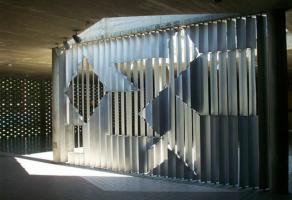Kinetic art: its characteristics and most important artists
Kinetic art, also known as kinetic art, is an artistic trend that emerged in Paris in the mid-twentieth century, which integrates physical-spatial movement as a compositional element.
The concept of kinetic art extends to all works based on physical or virtual movement, which may include some expressions of optical art. However, not all optical art is kinetic. For an art object to be kinetic, movement must be the center of interest.
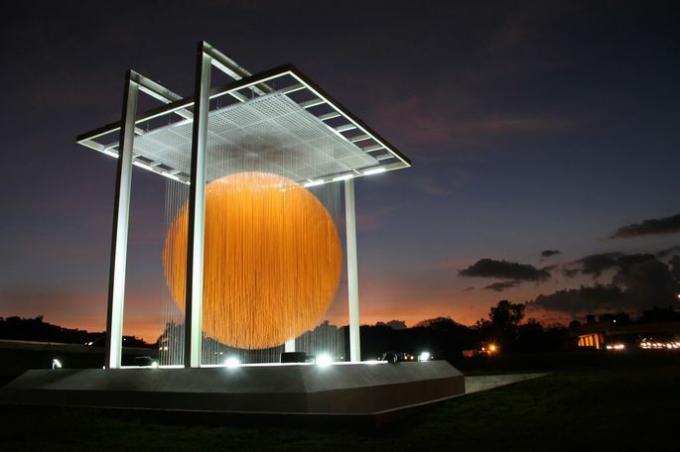
The types of kinetic art They are classified according to the type of movement, and therefore, they group three-dimensional and two-dimensional expressions equally. Namely:
- Works of real movement, energized by various types of mechanisms.
- Virtual movement works, which generate the optical perception of movement.
Kinetic sculpture it is the most outstanding expression of this current. Unlike traditional, solid and static sculptures, kinetic ones are dynamic structures. Rather, they are conceived as three-dimensional works, whose main trends are:
- Mobile structures that are activated by counterweight systems, environmental vibrations, inertia, etc. For example, Calder's mobiles.
- Participatory sculptures, which require the intervention of the viewer. An example is the penetrables of Jesús Soto.
- Machines powered by electromagnetic systems. For example, Francisco Sobrino's machines.
- Sculptures that integrate lighting as a resource for the perception of movement, be it natural or artificial light. For example, Julio Le Parc's works based on reflections.
- Sculptures integrated into the environment or conceived as spectacles, such as the Tinguely fountains.
Next, let's understand what are the characteristics of kinetic art and what are the most important representatives and works.
Characteristics of kinetic art
Kinetic art inherited the mechanistic will from Futurism and, from Constructivism, the technological celebration. The fusion of these two aspects made it possible to make the movement something more than a principle: a perceptible and / or real reality. From there the characteristics of this current emerge.
Movement as a principle

Unlike Futurism and Constructivism, in kineticism the movement is not imagined, but is perceived sensually and materially. It understands movement in three ways: the actual physical movement of the work, the optical movement, and the physical movement of the viewer.
Transformability of the work
If movement is the fundamental principle, the work is conceived as a transformable reality, whether induced by an internal mechanism, by the action of environmental phenomena (wind, light) or by the participation of the viewer.
Space and light as "matter" of plastic creation
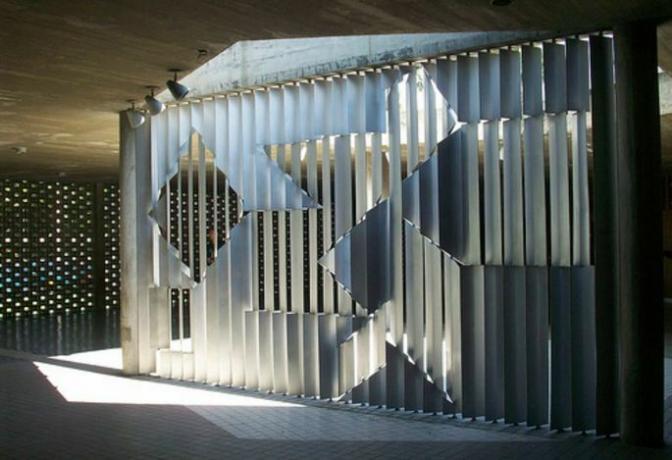
Kineticism can conceive space and light as plastic "matter" within the composition. The apparent immateriality of empty space is essential to create movement effects. The same occurs with light and reflections, which affect the work by causing it to constantly change.
Study of optical perceptions
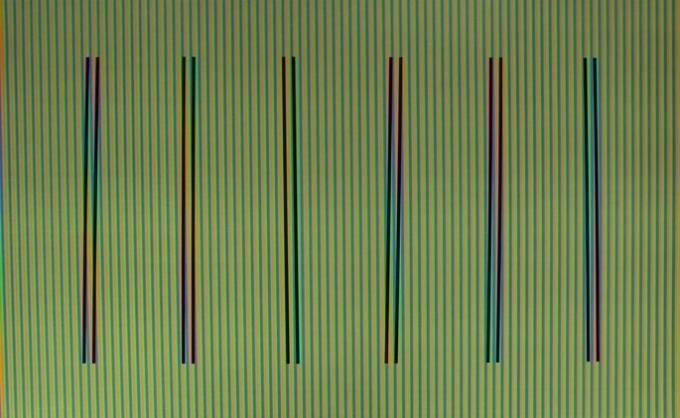
Following the Impressionists, the Kinetics also devoted themselves to the study of the mechanisms of perception optics, but they took a step forward by studying retinal aggression and perceptual ambiguity of the abstract. Thus, they included the study of visual rhythms, the superposition of ambiguous geometric shapes and dynamic light perception.
Kineticism creates repeated sequences (of lines, simple shapes, or colors) that, taken together, create the perception of a visual rhythm. When these rhythms are altered by an object, or when they are subjected to movement (of the object or of the viewer), a visual perception is created as a result of retinal aggression. For this reason, kineticism is considered a mathematical evolution of abstraction.
Playful and participatory component

Participation and play are implicit in kineticism. The kinetic work is presented to the viewer as a visual game and, in many opportunities, requires, in fact, his active participation. Such is the case, for example, of penetrable sculptures. In this way, kineticism proposes a change in the relationship of people with artistic objects. The work remains unfinished, awaiting the viewer.
Public art and integrated into the environment

Precisely because of its dynamic, playful and participatory character, kinetic art was also committed to integration in the public space. A good part of these proposals included the participation of the passerby. Another part, no less important, was integrated with environmental elements, such as wind and water. Thus, art left the museums to meet city life and nature.
It may interest you Abstract art.
Artists and works of kinetic art
Victor Vasarely

Hungary, 1906-1997. He was one of the most prominent artists of optical art and kinetic art. He implemented the contrast of two perspective systems and color zones with equal tonal value. One of the most used resources was optical ambiguity. He had an outstanding public work from the first interventions of him in the University City of Caracas.
Jesus Rafael Soto
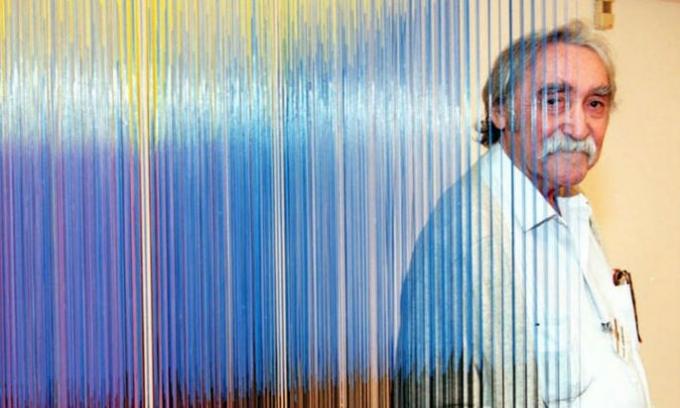
Venezuela, 1923-2005. Inspired by the twelve-tone musical system and serial music, he used repetition and progressions to achieve an effect of continuity and evolution of serial repetition. He conceived space as part of the matter of his work and understood that the human being was not in front of space but was part of it. He stood out for the creation of penetrables.
Carlos Cruz-Diez
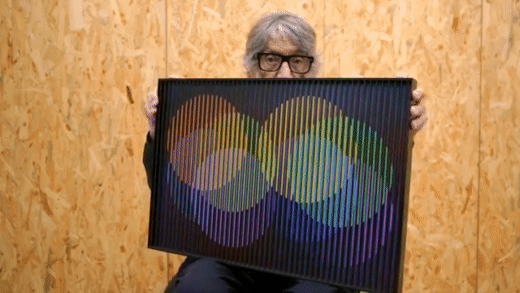
Venezuela, 1923-2019. He made the colorful vibe the center of his proposal. Known for using narrow colored slats, arranged at right angles to the surface of the work. Thus, the color refracts on the surface and, as the viewer moves, the work modifies creating the sensation of movement.
You may also like: 9 works by Carlos Cruz-Diez and his plastic principles.
Jean Tinguely
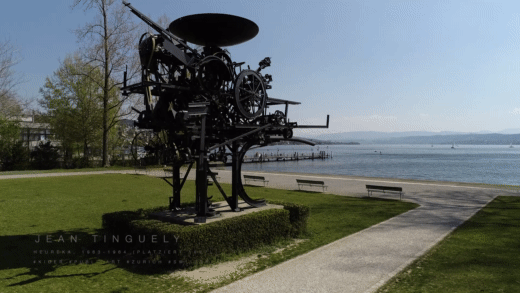
Switzerland, 1925-1991. He was a painter and sculptor widely known for his so-called "machine sculptures", which made him one of the most important exponents of kineticism. His approach was closer to the anti-artistic postulates of Dadaism, which is why his work is a satire on industrial overproduction. His first properly kinetic work was Heureka, which is characterized by the production of "useless" movement, that is, devoid of meaning.
Eusebio Sempere
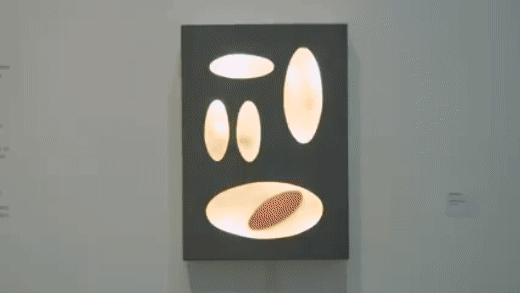
Spain, 1923-1985. He was a painter, sculptor and graphic artist inserted in the current of kineticism. It became known in 1955 thanks to the exhibition of the series Luminous reliefs, in which he integrated electric light as a factor of movement within the work. Through changes in the lighting patterns of the piece, dynamic geometric shapes were constructed before the viewer's eyes. Later he explored lines as a plastic resource in mobile structures and morotized sculpture.
Julio Le Parc

Argentina, 1928. Founding member of the GRAV group, he has stood out for his research on light as dynamic element of the work, specular effects, the action of light reflections and the movement.
Francisco Sobrino Ochoa
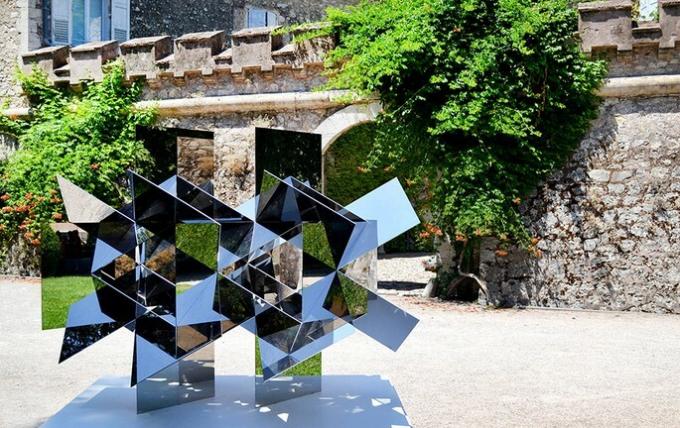
Spain, 1932-2014. Former member of the GRAV. He stood out in kineticism for the creation of so-called "permutational structures", based on the light transformation at different times of the day or under various sets of interior lighting. He also created mobile works through electromagnetic mechanisms and works based on retinal vibration.
Origin of kineticism
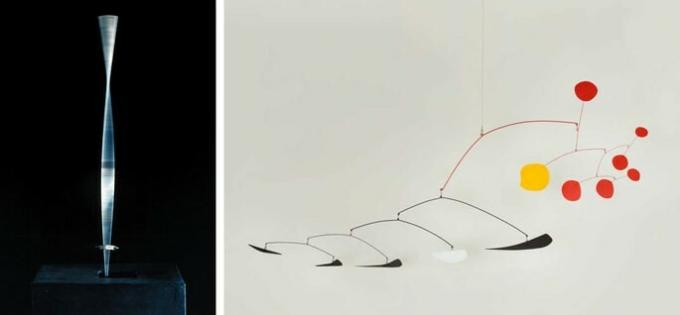
Right: Alexander Calder: Guava, 1955, mobile made of metal plate, rods and wires (photograph by Tom Powel Imaging). Calder Foundation.
As an artistic movement, kinetic art had its origin in Paris towards the second half of the 20th century. The first milestone is the exhibition Le Mouvement, held in 1955, at the Denise René gallery. There, works by Victor Vasarely, Marcel Duchamp, Alexander Calder, Jesús Rafael Soto, Yaacov Agam, Jean Tinguely, Robert Jacobsen and Pol Bury were gathered. They all had in common movement.
This and other exhibitions were the starting point for individual and group initiatives that explored the aesthetic possibilities of royal dynamism, a novelty in fine arts. For example, him X Salon des Réalités Nouvelles (Paris, 1955), from which the kinetic Eusebio Sempere emerged.
Between 1960 and 1968 the Paris Visual Art Research Group (GRAV for its acronym in French) stood out, dedicated to the study of visual effects, among which was movement. Its members were Julio Le Parc, Francisco Sobrino Ochoa, François Morellet, Horacio García-Rossi, Hugo Demarco, Joel Stein, Yvaral and Denise René.
At the same time, the particular initiatives, anchored in diligent research, of artists such as Carlos were transcendent. Cruz-Diez, devoted to the study of the chromatic phenomenon beyond its supports, from whose interferences arise perceptions of movement.
Background of kinetic art
Now, the antecedents of kinetic art go back, on the one hand, to some avant-garde of the twentieth century, such as futurism and geometric abstraction, particularly constructivism. On the other hand, the experimental spirit of the Bauhaus school.
The play Vibrating rod by the constructivist Naum Gabo, exhibited in 1920, set a determining precedent. Later, around the 1950s, the invention of “mobile” sculptures would make Alexander Calder the forerunner of kinetic art as we know it.
While Futurism could only represent movement and suggest it to the imagination, Kineticism presents Really. Thus, the machinist dream of the Futurists became a concrete reality thanks to kinetic art. For its not enough, kineticism made art accessible by calling for the active participation of the viewer and by conceiving a public art truly integrated into the environment.
You may also like:
- Futurism: characteristics, representatives and works
- Artistic movements of the 20th century


